Kojima Productions Message Board


Snake moves across the dirt and rock with immaculate care, crawling in silence as rain soaks his suit. He blends into the darkness, and the passing chopper screeches overhead in ignorance of his trespassing. As the camera pans to reveal his face, each wrinkle on his brow betrays his great military experience and troubled past. But this is just another mission for the iconic hero, who returns to PlayStation today in Metal Gear Solid V: Ground Zeroes for PS3 and PS4.
Following the events of Metal Gear Solid: Peace Walker, Ground Zeroes finds Big Boss infiltrating a military compound in Cuba, with a mission to extract two high-value targets before they’re executed… or worse. Ground Zeroes establishes the initial story arc that will continue in Metal Gear Solid V: The Phantom Pain. Think of Ground Zeroes as an appetizer to the main course.
The talented team at Kojima Productions have worked marvels on PS4, lending a breath-taking sense of realism to Ground Zeroes and the characters therein. The character models and animation have reached new heights for the series, while the large military base brims with detail, both large and small. Rain lashes down from the night sky in gouts, mechanized gates groan into motion as claxons blare, and the distant whir of an approaching jeep motor can send even an experienced player into a panic.
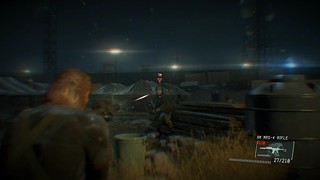
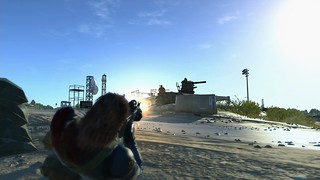
Special attention has been spent on Ground Zeroes’ controls, enabling players to move, crawl, dive, roll, and fight in fluid succession. In classic Metal Gear tradition, much of the fun comes from learning the behaviors of the soldiers on the base, and finding the best ways to deceive or dispatch them.
Snake has several tools for doing just that, including his trusty tranquilizer pistol, as well as a host of weapons on the base he can procure, from shotguns to rifles. Metal Gear fans will relish the return of other series standards, like engrossing radio chatter and a story steeped in intrigue. Although Ground Zeroes is but a taste of the full Metal Gear Solid V experience, it provides rich insight into Kojima’s future project.
Metal Gear Solid V: Ground Zeroes launches today for PS3 and PS4.

It’s been nearly six years since Hideo Kojima and his team at Konami delivered the PS3 epic Metal Gear Solid 4: Guns of the Patriots. Finally, its sequel is nearly upon us. The first part of Kojima Productions’ ambitious Metal Gear Solid 5 project arrives next week on PS3 and PS4. Titled Ground Zeroes, it serves as a prologue for the main event – the still-in-development The Phantom Pain.
Last month, our colleagues at SCE Japan sat down with the legendary creator to learn more about the game, and how he and his team are leveraging the power of PlayStation 4. Check out the full video above to see what he had to say.


Metal Gear Solid and PlayStation are two brands that have been bound for greatness since the beginning. And isn’t it fitting that, in the wake of the eighth Metal Gear game to grace PlayStation, we’ve decided to go back to the start, in a big, big way.
We’re proud to announce that Metal Gear Solid V: Ground Zeroes will be coming to PS3 and PS4 with the exclusive Déjà Vu throwback mission! By setting up shots from scenes based on the events of the past, you’ll be recreating the events of Shadow Moses as you take control of Naked Snake as he tackles Camp Omega in totally new, yet oddly familiar conditions. From Genome Soldiers to Hind D helicopters and FOXDIE, you’ll be seeing old faces and new twists that will have you shouting TIME PARADOX by the end.
Also, check out a lengthy demo of Ground Zeroes running on PS4, below!


Metal Gear Solid is not only an amazing PlayStation title, it’s one of the most quintessential video game experiences in the medium’s history. It’s been in the Smithsonian, graced the pages of the Guinness Book of World Records, and made almost every video game journalist’s top list of must-play games every year since its creation.
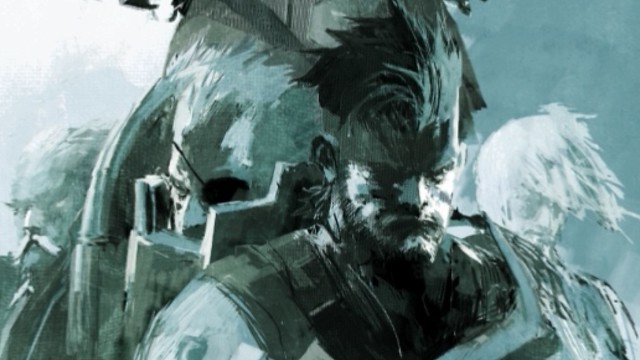
And although the series began in 1989 on the MSX system, I, like many others, first experienced Metal Gear Solid on PlayStation. From the first moment I entered the Cargo Elevator in the Lower Dock, to the final showdown with Liquid Snake, it had narrative and play like I’d never experienced before. And all of it was possible thanks to a small team led by Hideo Kojima.
From his humble beginnings with a small team at Konami Computer Entertainment Japan West, series creator Hideo Kojima had the dream of experiencing action from the perspective of a polygon-driven world, complete with camera control. With that in mind, he decided to revisit the series he thought he had finished for a final chapter to the story of Solid Snake. But thanks to the success of Metal Gear Solid, that original team has managed to swell to the Kojima Productions we know today, with many of the original team members still working on the next Metal Gear. Although the legacy of Metal Gear has continued for more than 24 titles, HD collections, spin-offs and ports, Metal Gear Solid still remains one of our most memorable titles to date.
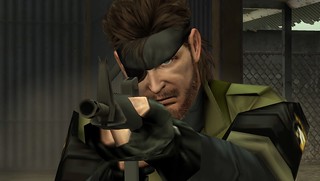
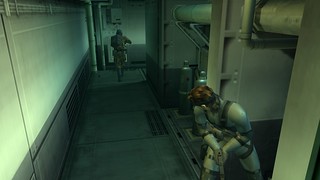
If you’ve never played this classic, it’s never been easier to start! Metal Gear Solid is currently available on PlayStation Store as a PS1 Classic. If you want to experience the entire saga of Solid Snake, Metal Gear Solid: The Legacy Collection is available at retailers nationwide, with a download code for Metal Gear Solid included. As we count down the top 15 most memorable moments from Metal Gear Solid on our official Facebook page, we want to know: what’s your most memorable Metal Gear Solid moment?

OK, it’s actually quite a nice pile of content, but I really wanted to make the Symphony of the Night opening reference. Now then, that out of the way, we have a rather surprisingly unrelated game to talk about. Castlevania: Lords of Shadow – Ultimate Edition is actually a compilation of the recent Hideo-Kojima-tinged, MercurySteam-developed series pseudo-reboot, spanning Lords of Shadow 1, 2, and two add-on chapters. You’ll remember, of course, that Cara whiffed icy vampire blood percolating in Steam’s vapors back in March, but now it’s official. Scatter into a flock of bats and scream past the break for a trailer.
(more…)




Speaking at the Eurogamer Expo, Snake charmer Hideo Kojima noted that being able to use multiple devices to access a game lends itself "very well" to the Mother Base system from Peace Walker and "that's something we're planning on for Ground Zeroes." Mother Base is an updated version of the crew management system first included in Portable Ops, where players could train and manage soldiers.
"The concept of developing weapons at your base is a very cool idea, and something that could be popular," Kojima added during a packed developer session at the event. "It's something we've been thinking of."
According to Eurogamer, the base will be accessible in-between the open world areas of Ground Zeroes, and that players will have access to the area via the on-call helicopter at Boss' disposal. Once at the base, players will be able to explore it on foot and watch its development.
Kojima again showed his previously revealed demo of the game, noting Ground Zeroes was running off a PC with similar specifications to the Xbox 360 and PlayStation 3.
Metal Gear Solid: Ground Zeroes is coming to the PC, Xbox 360, and PlayStation 3 sometime in 2013.

Ground Zeroes debuted at PAX earlier this month, showcased in a trailer which saw Snake try to infiltrate a compound at night. Whether or not that particular mission is possible during daylight remains to be seen (pun intended), or what other elements are dependent on the time of day.
Talking of the PAX trailer, Konami today released some hi-res screenshots taken from it so you can have a hi-res gander.


One of the worst ways to realize you’re getting old is when something you hold dear reaches a certain age. That being said, Metal Gear celebrates its 25th anniversary this month.
The Metal Gear series, although not originally created for PlayStation consoles, began to reach its current level of popularity in 1998 when Metal Gear Solid was released on the original PlayStation.
We met with Hideo Kojima to talk about his thoughts on the series’ landmark games, and to discuss what’s in store for the future’s franchise.
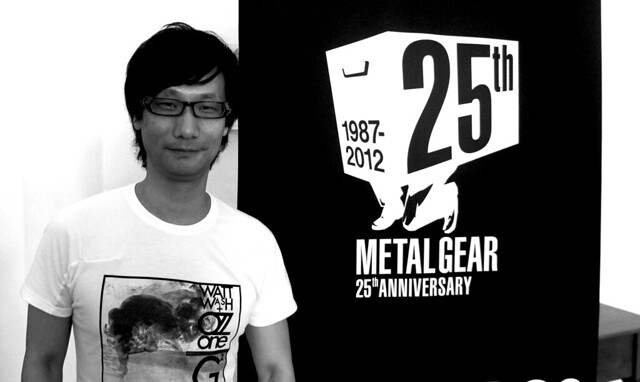
Metal Gear — 1987 (MSX2)
Hideo Kojima: This is the year I began working in the video game industry, as a game designer and planner. I was very young — among the first generation in the industry in Japan. I had already built up a certain reputation when I started as an employee, but the first game on which I worked for half a year was cancelled. We didn’t know when we were going to finish it, and one day my superiors called me to inform me they we cancelling it.
I thought about leaving the company and looking for other work, but they offered me the chance to develop a combat game for the MSX. The result of this offer was the first Metal Gear. It was launched exactly 25 years ago. It is well known that the MSX had many technical limitations, and I didn’t want to make war games. So I decided to create something similar to The Great Escape — something involving an escape — and in the end I made an espionage game.
Metal Gear received good reviews, and as the planner I had to create some drawings for the game. I didn’t have many tools, so I had to go to the programmers and tell them exactly what I had in mind and what I wanted them to do.
Back then, programmers made the final decisions, rather than the planners, which bothered me a lot. I wanted to have the final say on the games I was creating, so I asked for a script system to be made so I could input sounds and animations whenever I liked. This is how Snatcher was born.
Metal Gear Solid — 1998 (PlayStation)
 Hideo Kojima: I was making games like Policenauts, and I heard rumors about a console on which polygons could be created in real time. This really grabbed my attention, since one of the major attractions of games is the sensation of action, and I was intrigued to see what I could achieve with those polygons. Metal Gear is a hide-and-seek game, and the thought of doing this while adding a camera that could change position really excited me. So I stopped making script-based games and went back to asking for favors from programmers for this 3D world.
Hideo Kojima: I was making games like Policenauts, and I heard rumors about a console on which polygons could be created in real time. This really grabbed my attention, since one of the major attractions of games is the sensation of action, and I was intrigued to see what I could achieve with those polygons. Metal Gear is a hide-and-seek game, and the thought of doing this while adding a camera that could change position really excited me. So I stopped making script-based games and went back to asking for favors from programmers for this 3D world.
I was a designer for Metal Gear Solid, but I was not a producer, so I had no say in the budget, release date, or promotion of the game. I remember when they told me what the release date would be and I had no say in the matter… these are bitter memories for me.
At Kojima Productions I’m a director, producer, and designer of video games; I have control over the budget, and more say in what to do or what not to do, especially regarding hiring. In fact, the people who worked on the first Metal Gear Solid are still the core of Kojima Productions.
Metal Gear Solid 2: Sons of Liberty — 2001 (PlayStation 2)
Hideo Kojima: Metal Gear Solid sold well throughout the world; it was a great success. When I heard about the hardware for the PlayStation 2, I wanted to try something new. Up to that point, all cutscenes had focused more on details like facial expressions, but I wanted to pay more attention to the surroundings, to see how much I could change them in real time. Current games like Call of Duty have followed this trend of making your surroundings more realistic.
Since Metal Gear Solid sold very well, I had a bigger budget for MGS2, so I was able to work with people like Harry Gregson-Williams, with whom I had wanted to work for some time, but had always been told the funds weren’t available. We were under a lot of pressure, but at the same time I enjoyed the creative freedom I had in making the game.
We were also able to promote the game in parallel to its production. I remember at E3 2000 we received a standing ovation, which I really enjoyed. Looking back, I have fond memories of the development of Metal Gear Solid 2.
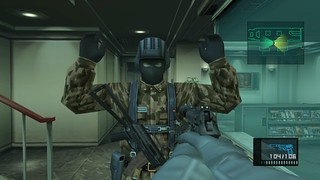
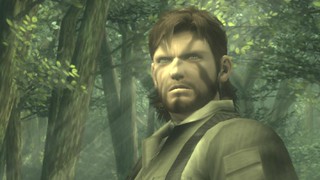
Metal Gear Solid 3: Snake Eater — 2004 (PlayStation 2)
Hideo Kojima: While MGS2 sold well, many fans of Snake were upset that Raiden was the main protagonist; we received a lot of complaints about that. There were also comments about the story unfolding too quickly; it created quite a stir. With this in mind, we created Snake Eater.
At the time, I was not just a designer but also a manager, in charge of the studio. We were therefore able to develop several projects at once, such as Boktai, Zone of the Enders, and The Twin Snakes. I thought it would be very hard for me to develop Snake Eater as the lead creator, so I tried to delegate responsibilities to younger employees in the studio. In the end it couldn’t be done, but it was my first attempt in doing it.
After MGS3 was finished, in order to make it clear that the next Metal Gear would not be directed by me, while on tour in Europe we announced that the next director would be Alan Smith, an alias.
Metal Gear Solid 4: Guns of the Patriots — 2008 (PlayStation 3)
Hideo Kojima: The PlayStation 3 was quite a complex system; games had to be developed in three levels. By the end of the Metal Gear Solid 4 project we had nearly 200 people working on it, with three directors (although often they were directors in name only, and I ended up doing a lot). This is why the game was delayed.
We made MGS4 according to a very Japanese method. At the time, the trend was for open-world games, but we decided to pay no attention to this and take another path. I already felt the need to create something similar to what we are doing with the Fox Engine.
In order to develop the Fox Engine, I had to understand how things worked elsewhere, so for a year and a half I visited studios around the world, and since we are Japanese people we were able to see the way others worked and recognize that in many respects their methods were better than ours.
Since the Fox Engine was going to take a lot of time to create, at the same time we began working on Peace Walker.

Metal Gear Solid: Peace Walker — 2010 (PlayStation Portable)
Hideo Kojima: We did not only develop Peace Walker for the PSP because it was a popular console in Japan, but also because we had the concept of Transfarring in mind, so as a test we developed it on the PSP. Transfarring is now up and running, but it was something we had planned since the very beginning.
I think Peace Walker was a success. We were able to accomplish much of what I wanted, for example the whole social aspect which we had not achieved on the PS3. With simpler hardware, we were able to focus on doing things we had been wanting to try.
Fox Engine
Hideo Kojima: The Fox Engine is nearly finished, but the only way to be sure it works is to create a game at the same time and improve the engine with our tools as we go along. Originally we were going to do this for Metal Gear Rising: Revengeance, but a lot happened along the way and instead it is being made with the engine they have at Platinum Games.
Production studios in Japan are nearly extinct, a fact that we have recognized for nearly 10 years, and although the Fox Engine is not finished we are ready to show what it can do… on August 30th in Japan to be more specific.



Kojima Productions has unveiled an extensive list of available jobs, hinged on evolving the in-development Fox Engine and, more importantly, bringing the next game in the Byzantine franchise to life. According to the page introduction, Hideo Kojima and co. are on the hunt for engineers, artists, designers and a brand manager to handle "the latest Metal Gear Solid targeted for high-end consoles and PC."
If you think you can bolster the Fox Engine with new rendering tech, create "fantastic game content," or cultivate MGS "as a global mega-hit franchise in all regions," you should swing by the Game Developers Conference Career Pavilion between March 6 and March 9 and make yourself known.
We might nudge you out of the way as we deliver our own game concept, which we're tentatively calling "Metal 6ear Solid: Sublimation Synthesis." Don't you just love the sound of that, Kojima?


With Platinum Games taking the reins on Metal Gear Rising, what's Kojima Productions up to? KojiPro captain Hideo Kojima took to Twitter to tease the above image writing, "'New title' run by 'Fox Engine.'" It features a refreshing change of pace for the veteran game designer; namely, soldiers and tanks.
Alright, so you're not impressed with what Fox Engine is showing off. Kojima suspected as much, so he followed up with another tweet. "One of the key features about 'Fox Engine,' here's the transparent technique," Kojima wrote. "See-thru underwear." Now you're tasked with the following dilemma: Do you click past the break to see what he's talking about, or do you simply move on, content in the knowledge that you were the stronger person?


Kojima told a few cute stories from his past -- he said that he started writing as a young man, and early on wrote a long story called "Survival Battle" that had everyone in its world fight at the age of 14, earning extra time in their lifespan for each victory. He said that in college, he was an economics major, and thus the "only oddball in my class that wanted to make movies or novels." His economics thesis even included a short story "to surprise my professor, and he was very surprised," said Kojima through a translator, "but it didn't help my grade much."
Kojima also talked about his gaming influences, starting with the original Famicom, and mentioned titles like Super Mario Brothers, Xevious, and the Japanese text adventure Portopia Renzoku Satsujin Jiken as early influences on his work. "I felt great potential in the medium," Kojima said about discovering video games, adding that the interactivity was what really drew him in early on.

"Some people say I'm crazy, but I want to make a game that one billion people play at once, and it's something that hits them harder than a great book or film," Payton says of Camouflaj's future projects, of which there are currently two in development.
In 2008, Payton helped launched Metal Gear Solid 4 as assistant producer at Kojima Productions in Tokyo, but when his mother in the US was diagnosed with cancer he decided to move closer to home. After interviewing at "several" studios, he decided on Microsoft, where we now know he was working on Halo 4. Unfortunately, it seems that the Halo he wanted to build wasn't exactly what Microsoft had in mind. "The Halo I wanted to build was fundamentally different and I don't think I had built enough credibility to see such a crazy endeavor through," he told Kotaku in an interview.
After seeing friend and Haunted Temple Studios creative lead Jake Kazdal laboring on his own project, Skulls of the Shogun, Payton decided it was time for a change. "I think time is the most valuable thing we have, and I've decided that I'm not going to waste one more day working on something that doesn't speak to my values."






















